Guest editor, Halima Mahomed talks to Theo Sowa, CEO of the African Women’s Development Fund (AWDF) about how funders can support social movements
Halima Mahomed: Most institutional philanthropy goes to particular types of institutionalised civic action – CBOs, NGOs, thinktanks, academia. Why is it important for funders to engage with other forms of action, and particularly the social movement space?
Theo Sowa: A lot of funders have started to see the importance of social movements. For example in the area of violence against women, a lot of the research tells you it’s women’s rights movements, feminist movements where there have been successful responses. The problem is that social movements don’t lend themselves to being funded in the traditional ways. Also, people have started interpreting social movements as being NGOs or CBOs and people talk about civil society as if it is only NGOs or CBOs. That’s led to a dangerous trend where you are talking about one thing, but you are funding something very different. In a few years’ time, funders will turn around and say ‘well, we tried to support social movements and it didn’t work’. In fact, you were undermining rather than supporting those movements.
HM: Do funders put too much emphasis on how movements can be useful in meeting funders’ goals rather than on movements as sites for local voice, and agency and power?
TS: I think most funders do not recognise the extent of instrumentalisation or the true nature of social movements. They talk about building social movements, but philanthropy can’t build social movements. Real social movements rise out of action from local communities and local activists. The best we can do is to support them to build and strengthen themselves. AWDF arose from African feminist movements, and yet have to work hard to stay in touch with movements and work in ways that supports, rather than stifles them. For those that don’t even have that link, it’s so much harder. People assume they know how; but they’re not prepared to have that conversation on how to support movements differently.
HM: What are some of the other things that funders need to be mindful of in engaging with movements?
TS: There are two very big things. The first is funders having enough respect to allow movements to tell them what kind of support is needed and what is undermining. Very often, money thinks it has the best ideas and we have to break that syndrome. More respect and better listening is absolutely crucial.
The big elephant in the room is that having money really is having power. If we pretend it isn’t, that means that we don’t mitigate against it, and that is a dangerous thing.
I worry that while funders have wanted to really promote transformational change, we’ve become part of the NGO-isation of change. We need to shift our basic models and look at what we can do beyond just funding NGOs. If you’re on the ground you will see there is so much more to civil society and social action, other forms of organisations, different forms of social movements arising out of them, but we haven’t opened up our minds – and our funding strategies – enough to that.
HM: What are the problems with this issue of NGO-isation?
TS: We’ve ended up boxing activists up. Funders tend to say, ‘we can support your action, but only if you are a registered CBO or NGO’. And they end up forming artificial organisations and relationships, where people are distracted from their core activity because they are setting up something that is not relevant to their context but which they need to do in order to attract resources.
The other thing is that by acting as if NGOs and CBOs are the only form of civil society, we undermine all those other types of action. We are almost saying these are a legitimate form of organising and movements are not. That also undermines activists’ vision of themselves and their ways of working and longer-term development of movements. Sometimes, bad funding can disrupt movements, resulting in people fighting with each other rather than working together, because they’re chasing the same pot of money.
HM: Funding social movements in ways that are productive and led by movements requires fundamental rethinking. Are funders ready to do that?
TS: I think some are, but the systems they work in sometimes constrain their ability to do it well. AWDF rose out of social movements and we identify with them and fund in the best way possible to strengthen them. But, because you have to raise all the money you donate, you sometimes become a part of this problem. We have to watch it constantly to see how we prevent that deepening.
The whole nature of social movements has been that they are unpredictable, organic, intersectional in their activities, and driven by the issues they’re addressing and the people who are most affected by them – not by legal and organisational requirements of others. So it’s more risky to fund, and unfortunately, most philanthropy isn’t willing to take that risk of providing money for transformation rather than for fiddling at the edges. I’m not saying that that’s easy, because I know that sometimes it’s really hard to get the organisational and legal support for what your heart absolutely tells you is the thing to do. When we get braver about opening up philanthropy, I think we can get braver about supporting true transformation in all of its forms.
HM: As we talk about risks, there are two other critical things that philanthropy should be thinking about differently. One is power and the other is control over agendas. How do funders need to change the way they think about these as they engage social movements?
It’s not just about funding action or advocacy, it’s also about funding the safe spaces where activists can have radical conversations and develop their own ideas and agendas.
TS: That’s a big one! Power and control. The best social movements are the ones that are in control of their own agendas, because if you’re not, it’s very difficult to call yourself a movement. The danger of philanthropy thinking it’s in control of the agenda is very big and happens all the time. Take the issue of sexual and reproductive health and rights. On an international scale, you have funders saying, ‘this is the agenda’ and then you go into a village in, say, rural Mexico and they have very, very strong ideas about what their agenda is, some of which doesn’t even begin to figure on the international agendas, which in consequence is sometimes funding the wrong things.
We have to decide: are we pushing our agenda, or are we supporting social movements who have their own agendas which may not correspond with ours?
It’s not always mutually exclusive but the way in which you interact then becomes different. And the big elephant in the room is that having money really is having power. If we pretend it isn’t, that means that we don’t mitigate against it, and that is a dangerous thing. There are other types of power, too, and the people with money don’t always have them, so we need to look at how we respectfully address all power relationships and how to shift those.
HM: AWDF is part of the global women’s movement but also supports and engages very local women’s movements. What’s the importance of this local engagement and how can funders help to develop meaningful links that allow the local to inform the global, rather than the other way around?
TS: We are at our best at AWDF when we are linked into the movements on the continent in lots of different ways. For example we host the African Feminist Forum. It’s not ours, it’s the African feminists’ regional forum and the movement actors are making decisions and driving the agenda. We are listening to that and trying to raise money to support it. There’s also a whole range of activism on the continent that is very intersectional. There are also national feminist forums in different countries.
AWDF and the other funders need to find ways to support that whole range, but you can only do that when you are involved enough or listening enough to those on the ground saying ‘it’s this action that should be funded, it’s these organisations doing the work, it’s these collectives or collaboratives that have got exciting ideas’. If we are not part of the action it’s very hard to know where to go, but we and others can fund people who we know have got that wide reach on the ground, and they can find ways that enable those movements to flourish. And it’s not just about funding action or advocacy, it’s also about funding the safe spaces where activists can have radical conversations and develop their own ideas and agendas.
HM: There’s lots of things that take place before a movement emerges, for instance community organising and mobilising. Are funders thinking enough about those spaces?
TS: I’m not sure that we are but I’m also not sure the extent to which philanthropy can, just because of the distance issue. If you are too far away from where the transformative action is happening to be able to identify the pre-movements, the most you could hope for is that you are working with people who can and that you are resourcing them flexibly enough so that they can put resources into emerging action. Philanthropy should also be thinking about how it can better support things like thought leadership. That’s much harder because if you are investing in young women, for example, it can take 10-15 years before they’re making the decisions which make you think ‘yep, that was an investment well made’. A lot of philanthropy is turning out to be not very patient.
HM: Is there a difference in the attitude of philanthropy on the continent from that which comes from outside towards movements and this kind of other softer stuff?
TS: I wish I could say there was but if I’m honest, wherever it comes from, what you have is some philanthropy which has thought about this and is willing to take those greater risks, but the much larger proportion of philanthropy isn’t.
Some individual philanthropists – and I’m not talking about high net worth individuals, but people who are themselves on the ground and seeing what needs to change – will take much bigger bets. These are often involved in community philanthropy, providing smaller resources for ideas in social transformation at a local level. That kind of philanthropy is often prepared to take risks and able to find what is new and unknown, and it’s fantastic.
HM: We’re seeing increased interest from institutional philanthropy from outside the continent, but we are also hearing critiques of how they engage. What is the appropriate role of funders from outside the continent in supporting and engaging with movements?
If philanthropy continues to limit itself predominantly to what is legally registered we could miss out on some of the real opportunities to support change.
TS: The most important thing is respectful acknowledgement of people’s knowledge, experience and agency on the ground. There has always been philanthropy that crosses borders and that works when you have solidarity, rather than dictatorship, power with, rather than power over. But that absolutely means that you need to know the impact of your actions. I do think there is philanthropy that actively undermines the well-being of this continent. It’s not just international philanthropy, it’s also African philanthropy that is mimicking what we call international philanthropy. And it’s not just in Africa. If you are an American philanthropic organisation working in the US and you don’t have the right approach and understanding of power relationships, then you will be making decisions that can undermine rather than support. So, when that happens with people external to Africa coming in without understanding the continent and context, trying to impose agendas, that’s the very worst type of philanthropy.
International philanthropic institutions that are operating in Africa often have a lot to offer but they also they have a lot to gain from operating and working on the continent. But, they are only important when they are acting in solidarity.
We have got generations of African philanthropic action; it breaks my heart when you hear people who talk as if philanthropy is something that happened in the last 20 years when you had giving by high net worth individuals, who actually are not the most philanthropic individuals. If you get a poor woman who is giving 10 per cent of her income, even if it’s a small amount, that’s much more than a high net worth individual who’s giving 0.5 per cent of their income.
If we change who we think of as philanthropists and what we think of as philanthropy, and start thinking more about solidarity, we will be in a much better place and we’ll have less of the ego-driven philanthropy which tries to set the agenda. That’s where we see real change and that’s where social movements could be supported in a ways that encourages their growth and their autonomy.
HM: We talked earlier about closing civic space and how this non-recognition almost of movements and other kinds of organising further limits that space. Are there specific kinds of implications for movements either on the African continent or globally?
TS: Civic space has always been threatened by those in power who are frightened by movements of change. That is not new. The fact that we are so good at NGO-ising social movements in lots of places actually can be part of closing that space because it gives governments an easy target. But there are other civil formations, and if you are a government that claims to be democratic, it’s not possible to stop girls meeting in after-school clubs, or stop trade unions from forming whether they are or are not registered, or to stop religious groups establishing themselves. And we have social media, and even if they restrict access in technical ways, movements are growing and developing using new technology.
If philanthropy continues to limit itself predominantly to what is legally registered we could miss out on some of the real opportunities to support change. I think about how the Ford Foundation supported the civil rights movement in the US all those years ago. A big foundation supported that movement in ways that weren’t about what it dictated but what the movement itself needed. So, a little more creativity on the part of philanthropy moves us back into that space where philanthropy is at its best: innovative, taking risks, doing the things that others either can’t or will not do.
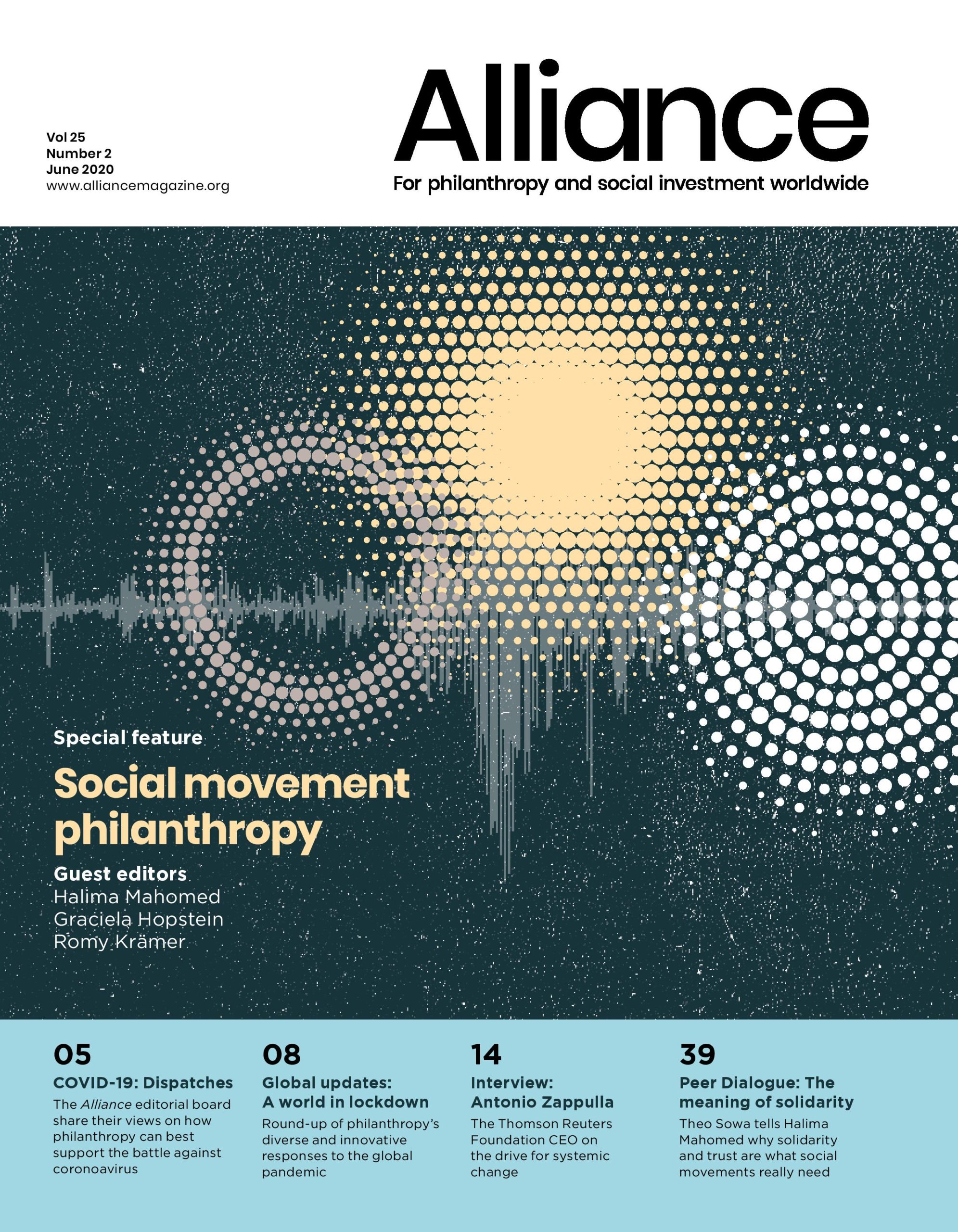
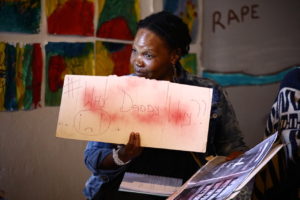
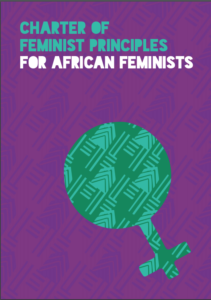
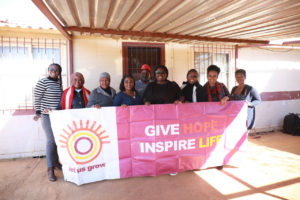

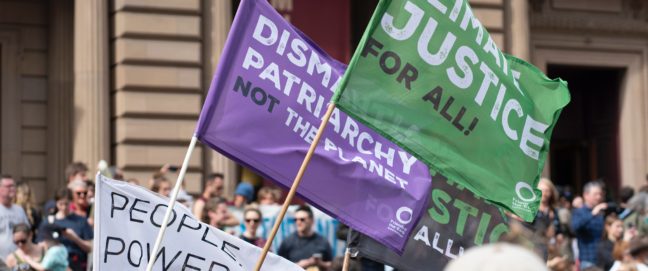

Comments (1)
This is such an important discussion. Thanks for the dialogue. It seems there may be real possibility now, that the BLM movement coupled with Covid-imposed rethinking of donor priorities, will open up space for foundations to expand their funding mechanisms. A great next step would be to collect practical examples of how progressive donors are managing their movement support. As examples of successful relationships are shared, it may help other foundations take the leap.